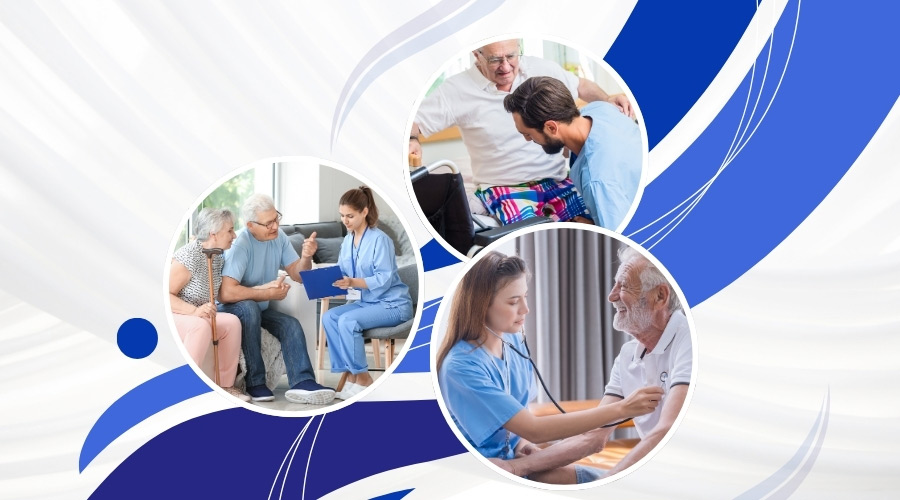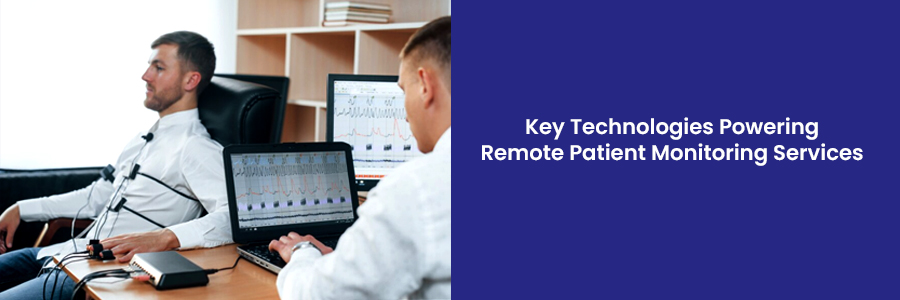 Chronic diseases like diabetes, heart failure, and hypertension account for the majority of healthcare spending—and they’re on the rise globally. Traditional models of care, which rely heavily on episodic, in-person visits, are often insufficient to manage these long-term conditions effectively.
Chronic diseases like diabetes, heart failure, and hypertension account for the majority of healthcare spending—and they’re on the rise globally. Traditional models of care, which rely heavily on episodic, in-person visits, are often insufficient to manage these long-term conditions effectively.
Enter remote patient monitoring services—a digital healthcare innovation that’s not only reshaping how we manage chronic diseases but also enhancing patient engagement and improving outcomes.
Remote Patient Monitoring (RPM) uses technology to track patients’ health metrics outside of traditional clinical settings. This continuous, real-time insight enables early intervention, personalized care, and a proactive approach to disease management that reduces hospitalizations, cuts costs, and puts patients at the center of their care journey.
What Are Remote Patient Monitoring Services?
Remote patient monitoring services refer to the use of connected medical devices and digital platforms to collect, transmit, and analyze health data from patients living with chronic conditions. These services are designed to bridge the gap between clinic visits by providing physicians with ongoing insight into their patients’ health status.
The core components of RPM include:
- Wearable devices: Smartwatches, ECG monitors, glucose monitors, and fitness trackers
- Sensor technology: Devices that track vital signs like heart rate, oxygen levels, and blood pressure
- Data analytics platforms: Systems that collect and analyze data to identify trends and flag issues
- Care coordination tools: Portals and apps that support communication between patients and care teams
With this infrastructure in place, healthcare providers can continuously monitor patients and make timely decisions—without requiring physical appointments for every concern.
How RPM Enhances Chronic Disease Management
For patients with chronic illnesses, maintaining stability and avoiding complications is the name of the game. RPM empowers providers and patients alike with real-time data and meaningful insights, making chronic disease management more responsive and effective.
1. Early Detection and Intervention
Continuous monitoring allows healthcare professionals to identify anomalies before they become emergencies. For example, a sudden spike in blood pressure or weight gain in a patient with heart failure can prompt a quick care team response, potentially avoiding a hospitalization.
2. Improved Medication Adherence
RPM services often include reminders and alerts that help patients stick to their medication schedules. When care teams can see in real time whether patients are following their treatment plans, they can provide timely support or adjustments.
3. Empowered Patient Engagement
Patients play a more active role in their care when they can access their health data and receive feedback. This sense of ownership leads to improved lifestyle habits, better adherence to treatment plans, and higher satisfaction with care.
4. Reduced Healthcare Utilization
Remote monitoring helps reduce avoidable ER visits, hospital readmissions, and the overall burden on healthcare systems. It’s a win-win—patients get better outcomes, and providers and payers see lower costs.
Key Technologies Powering Remote Patient Monitoring Services

Wearable Devices
Smart wearables are the front line of RPM. These devices monitor everything from blood pressure and glucose levels to oxygen saturation and sleep patterns. Continuous glucose monitors (CGMs), for instance, are transforming diabetes management by providing around-the-clock data that allows for precision insulin dosing.
Sensor Technology
Beyond wearables, sensor-based tools like connected spirometers, ECG patches, and pulse oximeters offer advanced diagnostics and monitoring capabilities. These tools provide more detailed health metrics and often integrate directly with cloud-based platforms.
Data Analytics and Artificial Intelligence
Collected data means nothing without interpretation. That’s where data analytics comes in. AI-powered RPM platforms can detect anomalies, predict adverse events, and alert care teams to issues before they escalate. This predictive capability is one of the most powerful aspects of remote patient monitoring services.
Telehealth Integration
RPM works best when paired with virtual care. Providers can respond to alerts with video consultations or schedule follow-ups based on data trends—creating a seamless hybrid care model that’s both accessible and comprehensive.
Challenges to Consider
Despite its benefits, RPM is not without its hurdles. Understanding these challenges is key to implementing effective remote patient monitoring services.
1. Cost and Accessibility
While technology prices have come down, access is still uneven. Many elderly or underserved patients may lack smartphones, internet access, or the digital literacy needed to engage with RPM tools.
2. Data Security and Privacy
Handling sensitive health information demands robust cybersecurity protocols. Organizations must comply with HIPAA regulations and implement end-to-end encryption and secure authentication mechanisms.
3. Workflow Integration
Adding RPM into an already complex clinical workflow can be difficult without the right tools and training. Providers need systems that are easy to use and integrate seamlessly with existing electronic health record (EHR) platforms.
Real-World Impact of RPM
- A study found that RPM reduced hospital readmission rates significantly in patients with chronic heart failure.
- The American Diabetes Association reports improved glycemic control and fewer complications among patients using continuous glucose monitoring as part of an RPM program.
- Health systems adopting RPM for hypertension have reported improved blood pressure control rates and higher levels of patient satisfaction.
These outcomes are driven by proactive care made possible through consistent, accurate, and actionable data.
Enabling RPM Success: The Role of Fusion CX
Implementing remote patient monitoring services isn’t just about devices and data—it’s about people and process. That’s where Fusion CX comes in.
Fusion CX offers end-to-end support for healthcare organizations implementing RPM programs—from patient onboarding and device education to ongoing engagement and tech support. With 20+ years of healthcare experience and a presence across 15 countries, Fusion CX helps providers scale remote monitoring with confidence and care.
Our RPM support services include:
- Omnichannel engagement: Phone, SMS, chat, and email support to ensure patients remain connected and compliant
- Patient education and onboarding: Personalized guidance to help users understand their devices and data
- 24/7 monitoring support: Trained healthcare agents who respond to alerts and escalate to care teams as needed
- Data triage and analysis: Supporting clinicians with relevant, prioritized information to act quickly and efficiently
And yes, we do it all without relying on the fax machine—we believe your RPM program should live in the cloud, not in a filing cabinet.
What sets Fusion CX apart is our empathetic approach to technology support. Chronic disease patients often face anxiety and uncertainty. Our team brings human connection and reassurance to every interaction, helping patients stay on track with their health goals and strengthening the trust between patient and provider.
The Future of Chronic Disease Management Is Remote—and It’s Here
As healthcare shifts from reactive to proactive models of care, remote patient monitoring services are proving to be a vital tool in managing chronic conditions. By providing continuous insights, encouraging early intervention, and empowering patients, RPM is redefining what high-quality care looks like in the modern age.
With the right combination of technology, people, and strategy, providers can overcome the challenges and unlock the full potential of RPM.
So, whether you’re a hospital executive, a health plan innovator, or a provider looking to scale value-based care, one thing is clear: remote patient monitoring isn’t the future. It’s the now.
And Fusion CX is here to help you make it work—securely, seamlessly, and with a touch of human warmth.
